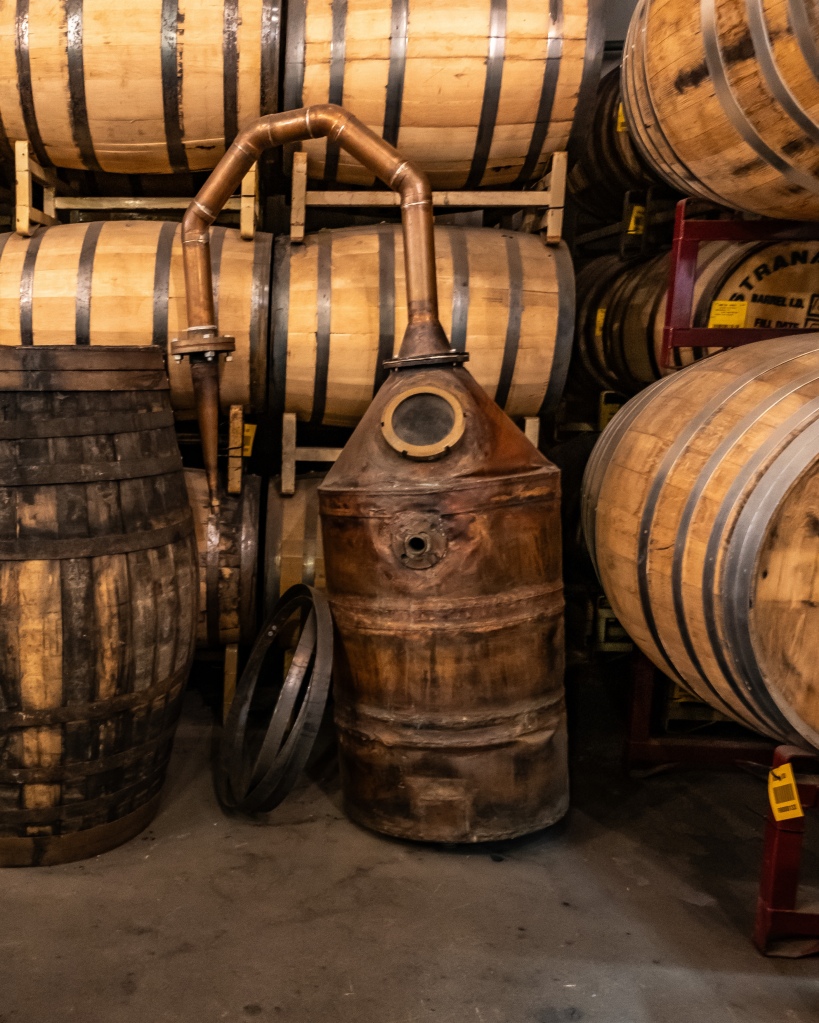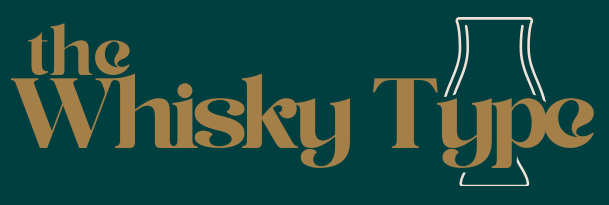Update: this post was intended to be part one of a two-part series, but it’s been six months, and my dog ate my homework (aka..my laptop ate my draft), so it’s been updated to a standalone post. It seems that another trip to Colorado is in order!
In July when I began planning a semi-impromptu trip to Denver, Colorado’s capital city, I didn’t intend to make it a “whiskey trip” per se. Yes, the primary driver of the visit was attending the first night of respected Scotch whisky writer Dave Broom’s brief US tour. And, as a single malt enthusiast, a visit to Stranahan’s Whiskey Distillery, the city’s well-known single malt makers, was required.
More, I expected to partake in a good amount of local beer. Colorado is, after all, home to the perrenial favorite of dads and hipsters everywhere, Coors Brewing, not to mention well-known craft breweries like Oskar Blues. But whiskey? I doubted that my explorations in the spirits realm would go very far.
I was—happily—wrong.

Colorado, an underrated whiskey destination.
By their current count, Colorado is home to approximately 40 distilleries producing craft spirits ranging from vodka to gin to bourbon and rye, not to mention American single malt and the nation’s first single pot still whiskey. Known collectively as the Colorado Spirits Trail, several of these distillers are peppered throughout the state, tucked between mountains and along distant trails, promising a bit of adventure with each sample. However, most are gathered along the state’s urban corridor spanning Colorado Springs to Fort Collins.
In Denver alone, there are approximately 15 distilleries, a fact I discovered when I googled “Denver Distilleries” on a whim last month. The first search result, published by VISIT DENVER, presented me with a list of no less than 12 active distilleries in and around the city. Another posting suggested a few more, topping off the list.
I had only a few days in the city to explore, so I quickly perused the webpages of each local distiller, determining the type of spirits they produced, a few points of interest, and, most importantly, where and when I could find them for a tasting. By the end of my research, I had identified nine targets for tours and tastings.
It was an ambitious plan and I’m not ashamed to admit that I failed to accomplish it. My alcohol tolerance is on the lower end of most whisky enthusiasts even without the added limitations of mountain elevation, so the effects of the alcohol quickly outpaced my ambitions. Even so, I managed to try spirits from five different distilleries while in Denver— and I was not disappointed by the experience. I’ll get into my experiences at each in part two, but first, let’s explore some of what, in my observation, makes Colorado’s spirits unique.

Forget farm-to-table; this is grain-to-glass.
All whiskies journey from the fields to the still room to the barrel before landing in your glass, but in Colorado, that journey is often personal. Much like a farm-to-table restaurant, the distilleries that I visited almost unanimously noted their use of local grains and botanicals, mashing together Colorado’s rich agricultural history with their distillation present.
Nearly half of Colorado’s 66 million acres were used for farmland in 2022, according to a bulletin produced by the US Department of Agriculture. As a state, Colorado is ranked 5th in the nation for barley production, with 52,000 acres producing more than 5 million bushels last year, and 18th for corn, despite nearly 1.4 million acres and 148,000,000 bushels.
Those grains are utilized in a number of ways: as food for humans and livestock, for a variety of grain-based products, and, of course, for the state’s robust beer and spirit industries (fun fact: 87% of the state’s barley goes directly to Coors Brewing Company for their beer).
But it’s not just the grains or the geography that make Colorado spirits so, well, Coloradan. El Dorado Springs, a small unincorporated area near the city of Boulder, produces some of the best water in the world (and the best bottled water in the nation). Many nearby whiskey distilleries draw on this natural spring water at various points in the distillation process, particularly between the barrel and the bottle, and are quick to infer that this renowned spring water plays an important part in producing high quality spirits.
Of course, the question of whether “terroir” has an impact on whiskey is constantly under debate. A 2021 scientific study suggested that locality does, in fact, impact the final flavor. Still, some of the industry’s greatest minds suggest that landscape and climate have more of a place in marketing than in the glass.
The truth is, no one is really sure exactly what goes into the precise flavor of a whiskey, not even those who make it. Whether proven or promise, Colorado distillers seem to be marching ahead under the assumption that locality is, in fact, critical to the outcome. And they might just be onto something; in the spirits I tried, certain qualities did suggest a regional influence: the balance of botanicals selected for a local gin, for example, or even a unique grassiness to balance the spice of a rye whisky.
Using local grains isn’t, of course, new. Distilleries have been utilizing regional sourcing techniques for centuries, but a global economy has supplemented nearby sources with an open door to the world’s agricultural products. The commonality of this ancient practice throughout Denver’s distilleries is something that makes it—and those distilleries—unique.

Keeping Colorado ( and its whiskey) weird.
Around the world, most distilleries use a pot still or a column still in their distillation process. On the occasion that they employ both in the same still house, they’re separate and distinct machines. During my visit to Stranahan’s Whiskey Distillery, however, I was confronted with something akin to Frankenstein’s monster—but much prettier.
The hybrid still, as they explain it, is believed to offer the best of both worlds in whiskey distillation: the even boiling and flavor-retention of a pot still and the efficiency and clean cut of a column. According to the tour guide, Stranhan’s was the first to employ the unusual stills, which featured a short, four-window column atop a wide pot. Their use has since spread, at least in the Denver area; I saw a similar configuration down the road at Laws Whiskey House.
Hybrid stills are not the only way in which Stranahan’s is forging its own path in distillation. Two other points of distinction center around their barrels and their boilings.
Early in the tour, our guide explained that the distillery boils their wort between the mash tun and the fermenter, a process that I asked the tour guide about after we concluded our tasting. “That’s how they do it in Scotland,” he told me confidently. According to my classes at the Edinburgh Whisky Academy, not to mention the production tours I’ve taken at Glenkinchie, Balvenie, GlenAllachie, and Bruichladdich, it’s not; wort typically is cooled after leaving the mash tun, not reheated. But I gently prodded a little further, and we speculatively decided that it could be part of the beer brewing process; Stranahan’s made its mark on the industry by first distilling beer (actual, intentional beer rather than distiller’s beer) into whiskey.
When we reached the barrel-packed warehouse, we also learned of Stranahan’s use of the Solera aging method, a process that is believed to increase the consistency of the spirits. Over time, some, but not all, of the whisky aging in the barrel is removed for bottling; it is then replaced with new make spirit, which mingles with the aged spirit left behind. It’s not a new method of aging, but it’s not one that has necessarily been widely adopted in the whiskey industry worldwide.
Stranhan’s is also using foudre barrels — massive, egg-shaped barrels more commonly employed in wine-making — but I’ll admit that I was both too far away from the tour guide and paying too little attention in that moment to understand why or how.
I have to wonder if Stranahan’s experimentation with new and old techniques may have come from its singularity; they were the first legal distillery in Colorado since prohibition. And while they were not the first to produce a single malt whiskey on American soil, the category was largely undefined (and unexplored) in 2006 when they released their first bottle.
There’s something to be said for having the space to forge your own path. Even the bourbon distilleries I visited seemed to be doing their own thing in one way or another, whether or not they are following more traditional distillation methods. With all eyes on the better-known American whiskey regions of Kentucky and Tennessee, perhaps Colorado distillers have had more room to play.
It’s likely that Colorado distilleries have charted a new course by necessity; the thin air and desert extremes of Colorado are a far cry from the cold, damp climates of Scotland and Ireland or even the humid, multi-seasonal atmosphere of the American mid-south.
When whisky is aged in a humid climate, alcohol is the first element to evaporate. But in a dry climate, water particles in the new make rush into the wood and the air ahead of the alcohol. This can result in higher-proof whiskey straight from the barrel, but desert angels are greedy, and distilleries lose a lot more product to evaporationoverall. As a result, the whisky can’t spend as much time in the barrel — and you wouldn’t necessarily want it to anyway. Wide swings in temperature throughout the year and within some days cause Denver’s barrels expand and contract at a rapid pace, creating more agitation within the spirit and greater interaction with the wood.
While that may present challenges to a distiller, it’s a good thing for whiskey lovers; it means that the spirits are ready (and, importantly, palatable) much more quickly than usual.
That’s a perfect way to segue into the tasting portion of my trip, but for that, you do have to wait—part two of my Denver trip notes (centered around the distilleries I visited) will be released later this week!

Leave a comment